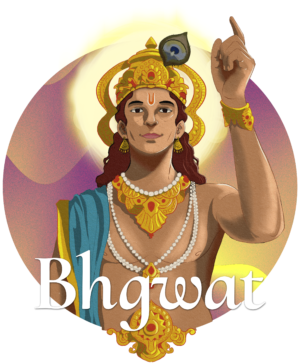The Bhagavata Purana describes the different phases or characteristics of Kali Yuga, the final and current age in the four-age cycle according to Hindu cosmology. Here are the phases of Kali Yuga as defined in the Bhagavata Purana:
- Increase in Unrighteousness: Kali Yuga is characterized by a widespread prevalence of unrighteousness, where moral and ethical values decline. People become driven by selfish desires, leading to dishonesty, corruption, and a disregard for virtuous behavior.
- Shortened Lifespan: In Kali Yuga, the average lifespan of human beings decreases significantly compared to previous ages. It is said to progressively decrease from thousands of years in earlier ages to around 100 years in Kali Yuga.
- Diminishing Intellect and Wisdom: The intellectual and spiritual capabilities of individuals decline in Kali Yuga. People become prone to ignorance, confusion, and a lack of discernment. Intellectual debates and philosophical discussions lose their depth and significance.
- Prevalence of Hypocrisy: Kali Yuga is marked by the prevalence of hypocrisy and deceit. People may outwardly exhibit religious or moral behavior, but their intentions and actions are often driven by self-interest, without genuine devotion or righteousness.
- Rampant Materialism: In Kali Yuga, materialistic pursuits and attachment to worldly possessions become dominant. People prioritize accumulating wealth, seeking pleasure, and fulfilling sensory desires over spiritual growth and inner transformation.
- Degradation of Social Institutions: The social fabric in Kali Yuga witnesses a decline in social and familial values. Family structures become weaker, relationships become more superficial, and social institutions experience corruption and instability.
- Disintegration of Traditional Knowledge: Sacred knowledge and scriptures gradually lose their prominence and are disregarded or misinterpreted. The wisdom contained in ancient texts and teachings becomes diluted, leading to a loss of spiritual guidance and authentic spiritual practices.
Despite the challenges and negative aspects associated with Kali Yuga, the Bhagavata Purana also presents opportunities for spiritual growth and liberation. It emphasizes that in this age, the path of devotion (Bhakti Yoga) and sincere devotion to the divine can offer solace, redemption, and liberation from the cycle of birth and death.
It’s important to note that interpretations of the phases of Kali Yuga can vary among different scholars and traditions. The Bhagavata Purana provides insights into the nature and challenges of this age while emphasizing the importance of spiritual practices and devotion in navigating the difficulties of Kali Yuga.



